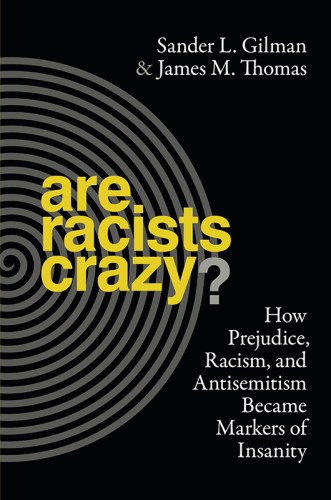
Are Racists Crazy?
How Prejudice, Racism, and Antisemitism Became Markers of Insanity
کتاب های مرتبط
- اطلاعات
- نقد و بررسی
- دیدگاه کاربران
نقد و بررسی

October 3, 2016
At a moment when race has resurfaced as an urgent part of the American discourse, Gilman (Seeing the Insane) and Thomas (Affective Labor) critically examine shifting views on race in the social sciences during the 20th century. The authors’ central project is mapping the change from pathologizing race (characterizing Jewish and black people as more susceptible to mental illnesses) to pathologizing racism. They describe how some Jewish psychiatrists at the start of the 20th century accepted the argument that those of their faith were more prone to hysteria, and how asylums in the post-emancipation South tried to treat black patients by recreating the conditions of slavery. The writers locate the central switch in attitudes in the aftermath of WWII, when the world was looking to the nascent fields of social and behavioral science to explain how the people of Germany came to commit such atrocities. This coincided with the birth of the civil rights movement, and led to examinations of the mental toll racism exacts on its victims and eventually, controversially, the costs to its perpetrators. Gilman and Thomas make their case methodically, with rigorous, far-reaching scholarship. They provide no easy answers but plenty of food for thought amid America’s current crisis in race relations.

November 1, 2016
A tour d'horizon of the historical relationship among race, racism, and mental illness.Although Gilman (Liberal Arts and Sciences and Psychiatry/Emory Univ.; Seeing the Insane, 2013, etc.) and Thomas (Sociology/Univ. of Mississippi; Working to Laugh: Assembling Difference in American Stand-Up Comedy Venues, 2015, etc.) journey as far back as the Enlightenment, the meat of their investigation covers the period from the 19th century to the present--and the meat is occasionally chewy, with demands placed on readers to be conversant with, say, "the crowd as a forensic concept has its origins in the Lombrosian criminal psychiatry." Nonetheless, in the authors' tracking of the great shift from pathologizing race to pathologizing racism, they cut through a broad swath of theorists, many of whom will be known to general readers. Furthermore, the clear, spot-on summations of the familiar theorists allow readers a measure of comfort in the treatment of less-known theorists (until the necessary supplementary reading can be done). Throughout, it's clear that what galls Gilman and Thomas is the expropriation of the subject by one branch of learning or another, juggling among medicine, sociology, biology, and psychiatry. Jews and blacks, understandably, are the subjects of much study, with the notion of race defined first in physiology, then the susceptibility of disease, and then the inability to find social adaptation. Ultimately, scientific racism moves "from overwhelmingly a biological condition to a socially constructed category." Although the historical transit over the subject alone makes the book valuable, equally useful are the authors' explorations of interiority, hatred, and crowd thinking. They examine Gabriel Tarde's laws of imitation; how Wilhelm Reich bridged the gap between Karl Marx and Freud; and, most illuminatingly, "conjunction," a "crisis between politics, science, and ideology...a period during which the different social, political, economic, and ideological contradictions that are at work in a society come together to give [racism] a specific shape." A sharp contribution to a significant topic that continues to generate heated discussion and debate.
COPYRIGHT(2016) Kirkus Reviews, ALL RIGHTS RESERVED.

























دیدگاه کاربران